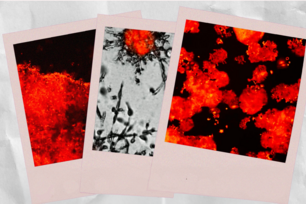Scientists identify a surprising new source of cancer stem cells
CAMBRIDGE, Mass. – Whitehead Institute researchers have discovered that a differentiated cell type found in breast tissue can spontaneously convert to a stem-cell-like state, the first time such behavior has been observed in mammalian cells. These results refute scientific dogma, which states that differentiation is a one-way path; once cells specialize, they cannot return to the flexible stem-cell state on their own.
This surprising finding, published online this week in the Proceedings of the National Academy of Sciences (PNAS), may have implications for the development of cancer therapeutics, particularly those aimed at eradicating cancer stem cells.
“It may be that if one eliminates the cancer stem cells within a tumor through some targeted agent, some of the surviving non-stem tumor cells will generate new cancer stem cells through spontaneous de-differentiation,” says Whitehead Founding Member Robert Weinberg. Cancer stem cells are uniquely capable of reseeding tumors at both primary and distant sites in the body.
During differentiation, less-specialized stem cells mature into many different cell types with defined functions. These differentiated cells work together to form tissues and organs. In breast tissue, for example, differentiated basal cells and luminal cells combine to form milk ducts.
While analyzing cells from human breast tissue, Christine Chaffer, who is a postdoctoral researcher in the Weinberg lab and first author of the PNAS paper, observed a small number of living basal cells floating freely in the tissue culture medium.
Intrigued by the cells’ unusual behavior, Chaffer conducted further targeted investigations, including injection of the floating basal cells into mice. After 12 weeks she found that the injected basal cells gave rise to milk duct-like structures containing both basal and luminal cells—a clear indication that the floating cells had de-differentiated into stem-like cells.
Until now, no one has shown that differentiated mammalian cells, like these basal cells, have the ability to spontaneously revert to the stem-like state (a behavior described as plasticity).
To see if basal cells could become cancer stem cells, Chaffer inserted cancer-causing genes into the cells. When these transformed cells were injected into mice, the resulting tumors were found to include a cancer stem cell population that descended from the original injected basal (more differentiated) cells. These results indicate that basal cells in breast cancer tumors can serve as a previously unidentified source of cancer stem cells.
As research for new cancer therapies has recently focused on eliminating cancer stem cells, Weinberg cautions that the plasticity seen in these basal cells suggests a more complicated scenario than previously thought.
“Future drug therapies that are targeted against cancer will need to eliminate the cancer stem cells and, in addition, get rid of the non-stem cells in tumors – both populations must be removed,” says Weinberg, who is also a professor of biology at MIT. “Knocking out one or the other is unlikely to suffice to generate a durable clinical response.”
Chaffer is now focusing on what actually prompts these flexible cells to de-differentiate, and in the case of cancer cells, how to stop the cells from converting into cancer stem cells.
“This plasticity can occur naturally, and it seems that the trigger may be a physiological mechanism for restoring a pool of stem cells,” says Chaffer. “We believe that certain cells are more susceptible to such a trigger and therefore to conversion from a differentiated to a stem-like state, and that this process occurs more frequently in cancerous cells.”
In the case of normal epithelial cells, the observed behavior may also allow patient-specific adult stem cells to be derived without genetic manipulation, holding promise for degenerative disease therapy.
This research was supported by the National Health and Medical Research Council of Australia, National Institutes of Health (NIH), Massachusetts Institute of Technology’s Ludwig Center for Molecular Oncology, the Breast Cancer Research Foundation, and a Department of Defense (DoD) Breast Cancer Research Program (BCRP) Idea Award.
* * *
Robert Weinberg’s primary affiliation is with Whitehead Institute for Biomedical Research, where his laboratory is located and all his research is conducted. He is also a professor of biology at Massachusetts Institute of Technology and Director of the MIT/Ludwig Center for Molecular Oncology.
* * *
Chaffer, C. et al. “Normal and neoplastic nonstem cells can spontaneously convert to a stem-like state." PNAS, online the week of April 11, 2011.
Topics
Contact
Communications and Public Affairs
Phone: 617-452-4630
Email: newsroom@wi.mit.edu


